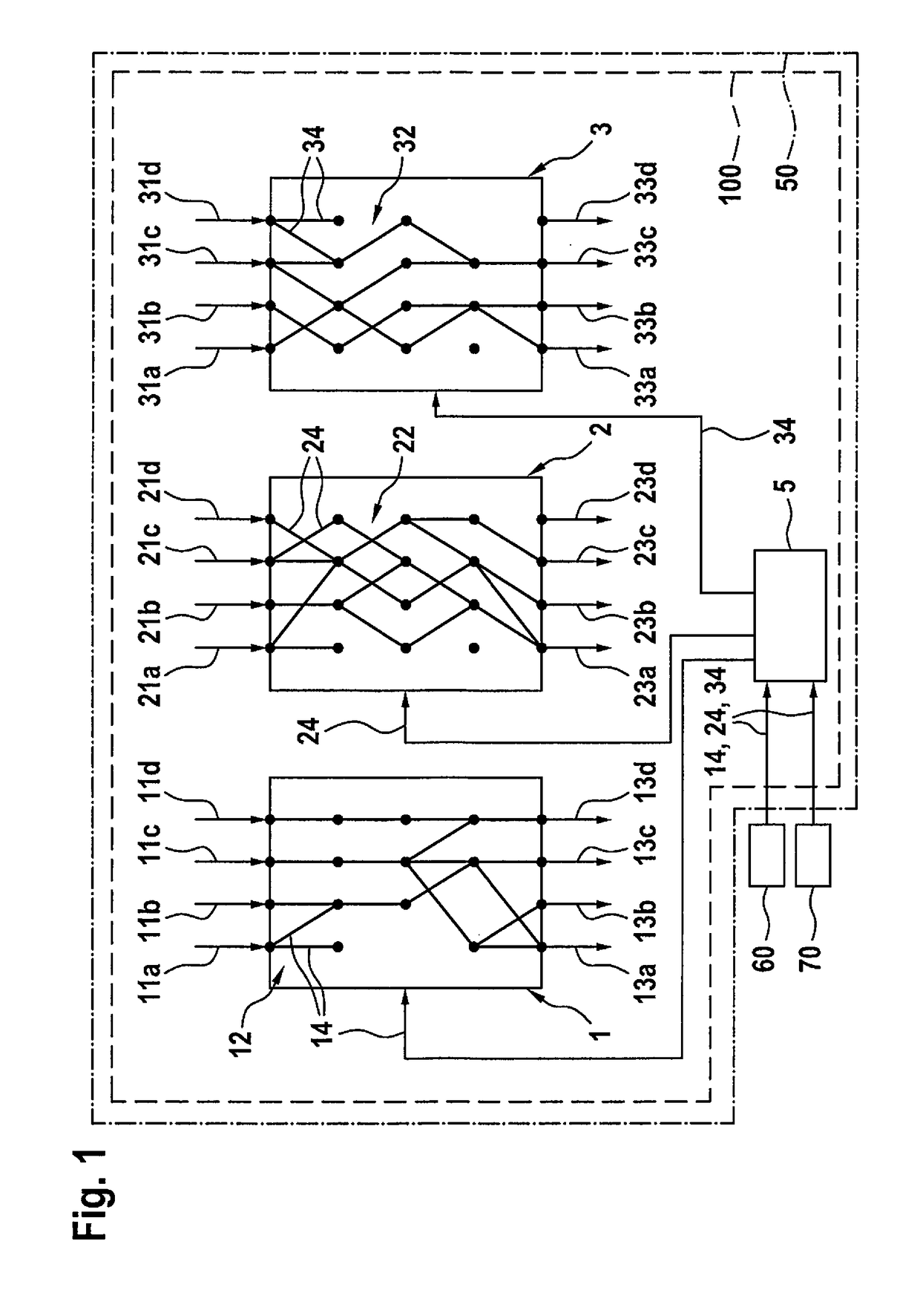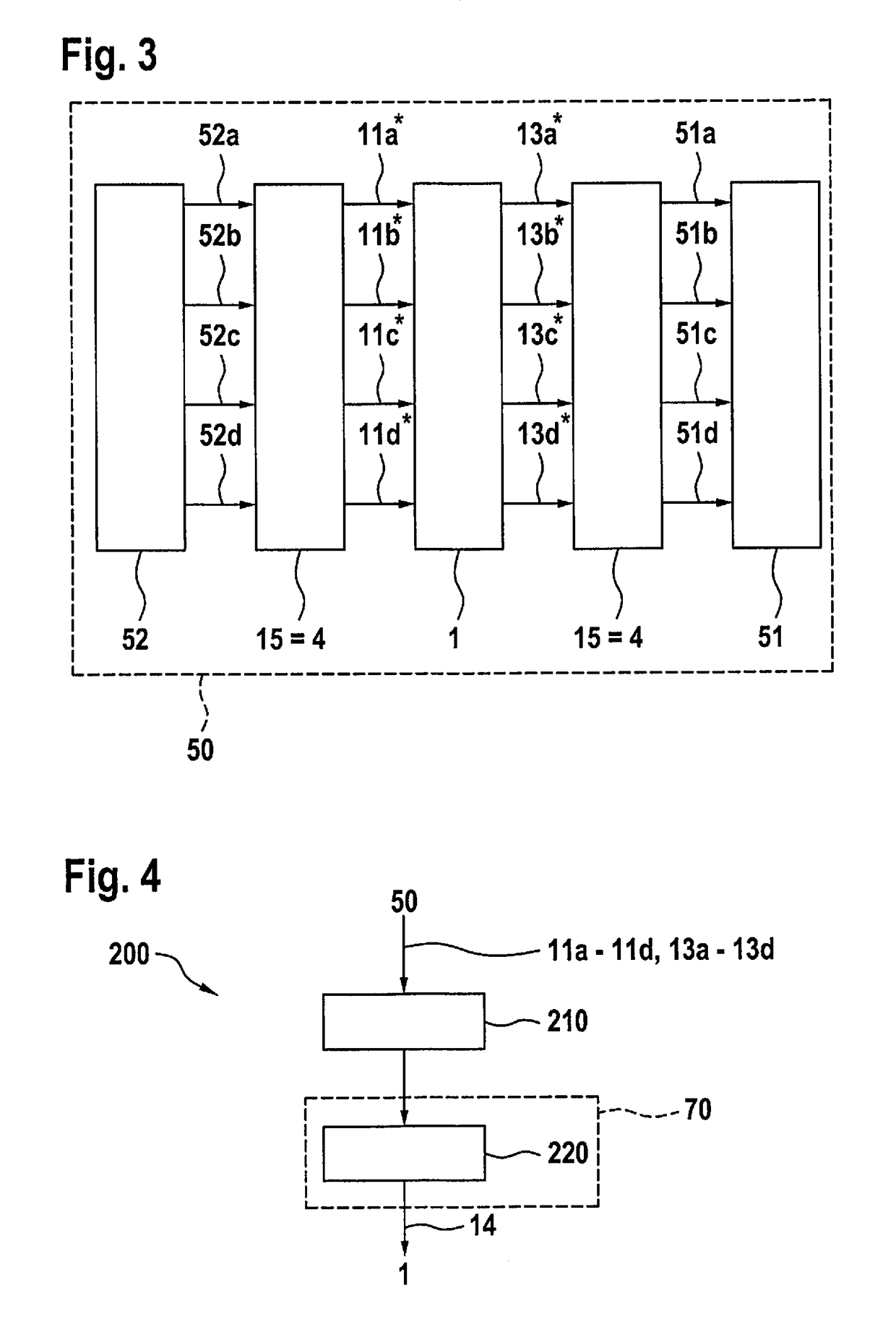Control system for an autonomous vehicle
- Summary
- Abstract
- Description
- Claims
- Application Information
AI Technical Summary
Benefits of technology
Problems solved by technology
Method used
Image
Examples
Embodiment Construction
[0038]According to FIG. 1, control system 100 contains three AI modules 1, 2, and 3, first AI module 1 ascertaining, on the basis of input variables 11a-11d, output variables 13a-13d for carrying out a first driving maneuver, and second AI module 2 ascertaining, on the basis of input variables 21a-21d, output variables 23a-23d for carrying out a second driving maneuver.
[0039]Third AI module 3 ascertains, on the basis of input variables 31a-31d, output variables 33a-33d for the smooth transition from the first driving maneuver to the second driving maneuver.
[0040]The three AI modules 1, 2, and 3 each have an internal processing chain 12, 22, or 32, whose connections are defined by parameter sets 14, 24, or 34. If AI modules 1, 2, and 3 are realized as neural networks, these parameter sets can for example designate probabilities that an event is forwarded along a connection further in the direction of the output, i.e. from top to bottom in the perspective shown in FIG. 1.
[0041]Paramet...
PUM
 Login to View More
Login to View More Abstract
Description
Claims
Application Information
 Login to View More
Login to View More - R&D
- Intellectual Property
- Life Sciences
- Materials
- Tech Scout
- Unparalleled Data Quality
- Higher Quality Content
- 60% Fewer Hallucinations
Browse by: Latest US Patents, China's latest patents, Technical Efficacy Thesaurus, Application Domain, Technology Topic, Popular Technical Reports.
© 2025 PatSnap. All rights reserved.Legal|Privacy policy|Modern Slavery Act Transparency Statement|Sitemap|About US| Contact US: help@patsnap.com



